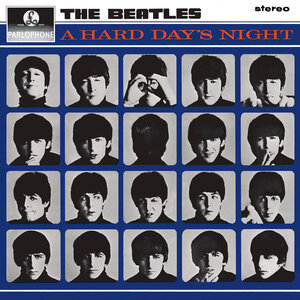
A Hard Day's Night is the third studio album by the English rock band the Beatles, released on 10 July 1964 by Parlophone, with side one containing songs from the soundtrack to their film of the same name. The American version of the album was released two weeks earlier, on 26 June 1964 by United Artists Records, with a different track listing. In contrast to the Beatles' first two albums, all 13 tracks on A Hard Day's Night were written by John Lennon and Paul McCartney, showcasing the development of their songwriting partnership.

Help! is the fifth studio album by the English rock band the Beatles and the soundtrack from their film of the same name. It was released on 6 August 1965. Produced by George Martin, it was the fifth UK album release by the band, and contains fourteen songs in its original British form. Seven of these, including the singles "Help!" and "Ticket to Ride", appeared in the film and took up the first side of the vinyl album. The second side contained seven other releases including the most-covered song ever written, "Yesterday".

The Quarrymen were a British skiffle/rock and roll group, formed by John Lennon in Liverpool in 1956, which evolved into the Beatles in 1960. Originally consisting of Lennon and several schoolfriends, the Quarrymen took their name from a line in the school song of their school, the Quarry Bank High School. Lennon's mother, Julia Lennon, taught her son to play the banjo, showed Lennon and Eric Griffiths how to tune their guitars in a similar way to the banjo, and taught them simple chords and songs.

Vincent Eugene Craddock, known as Gene Vincent, was an American musician who pioneered the styles of rock and roll and rockabilly. His 1956 top ten hit with his Blue Caps, "Be-Bop-A-Lula", is considered a significant early example of rockabilly. He was inducted into the Rock and Roll Hall of Fame and the Rockabilly Hall of Fame.
Rockabilly is one of the earliest styles of rock and roll music. It dates back to the early 1950s in the United States, especially the South. As a genre it blends the sound of Western musical styles such as country with that of rhythm and blues, leading to what is considered "classic" rock and roll. Some have also described it as a blend of bluegrass with rock and roll. The term "rockabilly" itself is a portmanteau of "rock" and "hillbilly", the latter a reference to the country music that contributed strongly to the style. Other important influences on rockabilly include western swing, boogie-woogie, jump blues, and electric blues.

Rock 'n' Roll is the sixth studio album by John Lennon. Released in 1975, it is an album of late 1950s and early 1960s songs as covered by Lennon. Recording the album was problematic and spanned an entire year: Phil Spector produced sessions in October 1973 at A&M Studios, and Lennon produced sessions in October 1974 at the Record Plant (East). Lennon was being sued by Morris Levy over copyright infringement of one line in his song "Come Together". As part of an agreement, Lennon had to include three Levy-owned songs on Rock 'n' Roll. Spector disappeared with the session recordings and was subsequently involved in a motor accident, leaving the album's tracks unrecoverable until the beginning of the Walls and Bridges sessions. With Walls and Bridges coming out first, featuring one Levy-owned song, Levy sued Lennon expecting to see Lennon's Rock 'n' Roll album.

My Bonnie is a 1962 album by English rock and roll singer-songwriter and musician Tony Sheridan. Sheridan, then playing in clubs in Hamburg with the Beatles, was discovered by producer Bert Kaempfert and subsequently signed with him to record. Sheridan recorded several songs with the Beatles, two of which were later released as a single. Further recordings without the Beatles filled out the album. Because of the later fame of the Beatles, the material has been repackaged several times.

"Come Together" is a song by the English rock band the Beatles, written primarily by John Lennon and credited to Lennon–McCartney. The song is the opening track on their 1969 album Abbey Road and was also released as a single coupled with "Something". The song reached the top of the charts in the United States and peaked at No. 4 in the United Kingdom.
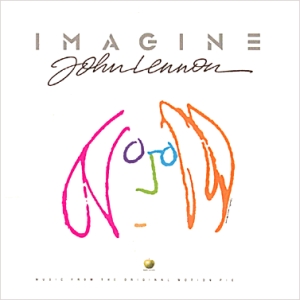
Imagine: John Lennon is a soundtrack album of popular music compiled for the 1988 documentary film Imagine: John Lennon from songs written or co-written by John Lennon. Originally released that year as a double album, it now remains available on one CD.

"Honey Don't" is a song written by Carl Perkins, originally released on January 1, 1956 as the B-side of the "Blue Suede Shoes" single, Sun 234. Both songs became rockabilly classics. Bill Dahl of Allmusic praised the song saying, "'Honey Don't' actually outclasses its more celebrated platter-mate in some ways." It has been covered by more than 20 other artists, including The Beatles, Ronnie Hawkins and Johnny Rivers. The song also appeared in the movies Prince of Tides, Diner, and Perfect Sisters.

"Cry for a Shadow" is an instrumental rock piece recorded by the Beatles on 22 June 1961. They recorded the song at Friedrich-Ebert-Halle within the gymnasium, Hamburg, Germany while they were performing as Tony Sheridan's backup band for a few tracks, under the moniker the Beat Brothers. It was written by George Harrison with John Lennon, as a pastiche of the Shadows style. It imitates the lead guitar with typical Hank Marvin licks, the melodic bass fills, and even has an imitation during the second middle eight of the famous Jet Harris yell. It is the only Beatles track to be credited to Lennon and Harrison alone.
Clifton E. "Cliff" Gallup was an American electric guitarist, who played rock and roll in the band Gene Vincent and His Blue Caps in the 1950s.
"Have I Told You Lately That I Love You?" is a popular song written by Scotty Wiseman for the 1944 musical film, Sing, Neighbor, Sing and performed by Lulu Belle and Scotty. It was the greatest hit of Wiseman and his wife and one of the first country music songs to attract major attention in the pop music field. Its repeating fourth line is "Well darling, I'm telling you now." Although it was featured in the movie, it wasn't released by them until 1947. The first released version of this song was by Gene Autry in 1945.
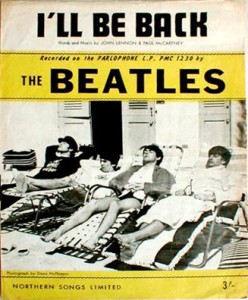
"I'll Be Back" is a song written by John Lennon, and recorded by the English rock band the Beatles for the soundtrack album to their film A Hard Day's Night (1964) but not used in the film. This song was not released in North America until Beatles '65 five months later.
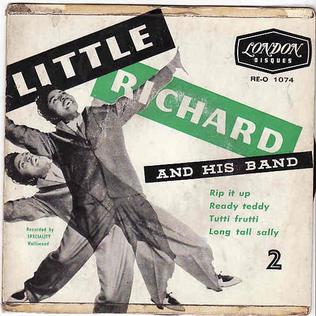
"Rip It Up" is a song written by Robert Blackwell and John Marascalco. It was first released by Little Richard in June 1956. Bill Haley and his Comets also released a recording of the song that year. The Little Richard version hit number one on the R&B Best Sellers chart for two weeks and peaked at number 17 on the pop chart. The Bill Haley and the Comets recording reached number 25 on the Billboard pop singles chart and number four in the UK. Bill Haley and the Comets also performed their version of the song in the 1956 film Don't Knock the Rock, in which Little Richard also appeared.

"Ya Ya" is a song by Lee Dorsey. The song was written by Dorsey, Clarence Lewis, Morgan Robinson, and Morris Levy. Levy's participation in the writing has been called into question. In fact, the Flashback release of the single (image) lists only Dorsey and Lewis as writers, as do the liner notes to the American Graffiti soundtrack.

Roots: John Lennon Sings the Great Rock & Roll Hits is a rare mail-order album issued by Adam VIII consisting of rough mixes of John Lennon's Rock 'n' Roll album. It was available through television sale for three days in January 1975 before Lennon and Apple/EMI pulled it off the market. Lennon then rush-released his "official" version in February 1975.
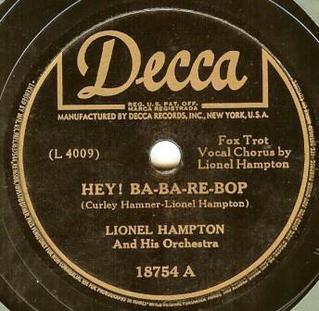
"Hey! Ba-Ba-Re-Bop" is a 1946 song by Lionel Hampton and His Orchestra. The song's lead vocals were performed by Lionel Hampton himself and the recording featured Herbie Fields on alto sax. The song went to number one on the R&B Juke Box chart for sixteen non-consecutive weeks and reached number nine on the national pop charts.

The Rock Connection is the twenty-seventh solo studio album by Cliff Richard. Released in November 1984 on EMI, the album is a part studio, part compilation album. It includes seven studio tracks recorded exclusively for the album, five tracks from the previous year's limited release album Rock 'n' Roll Silver, one previously released single, and one B-side from 1980.
















